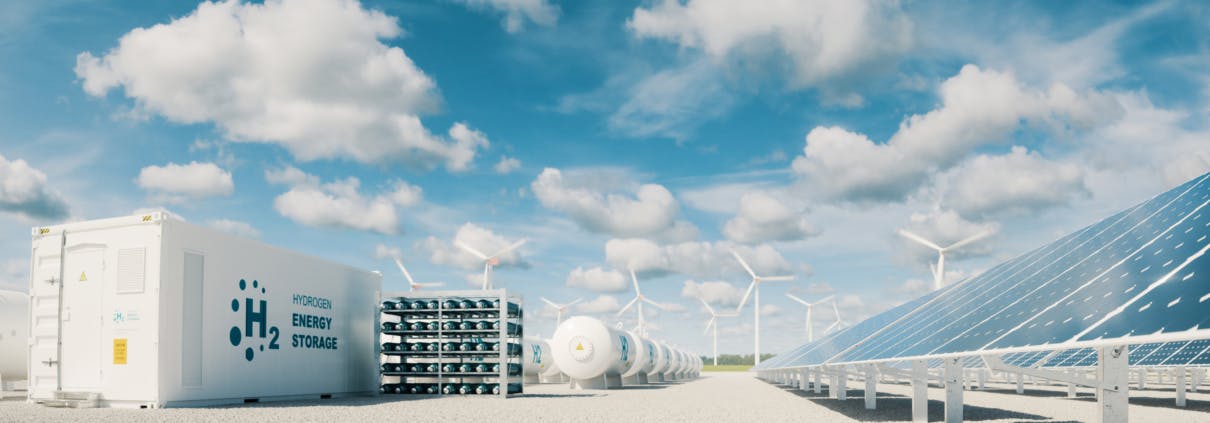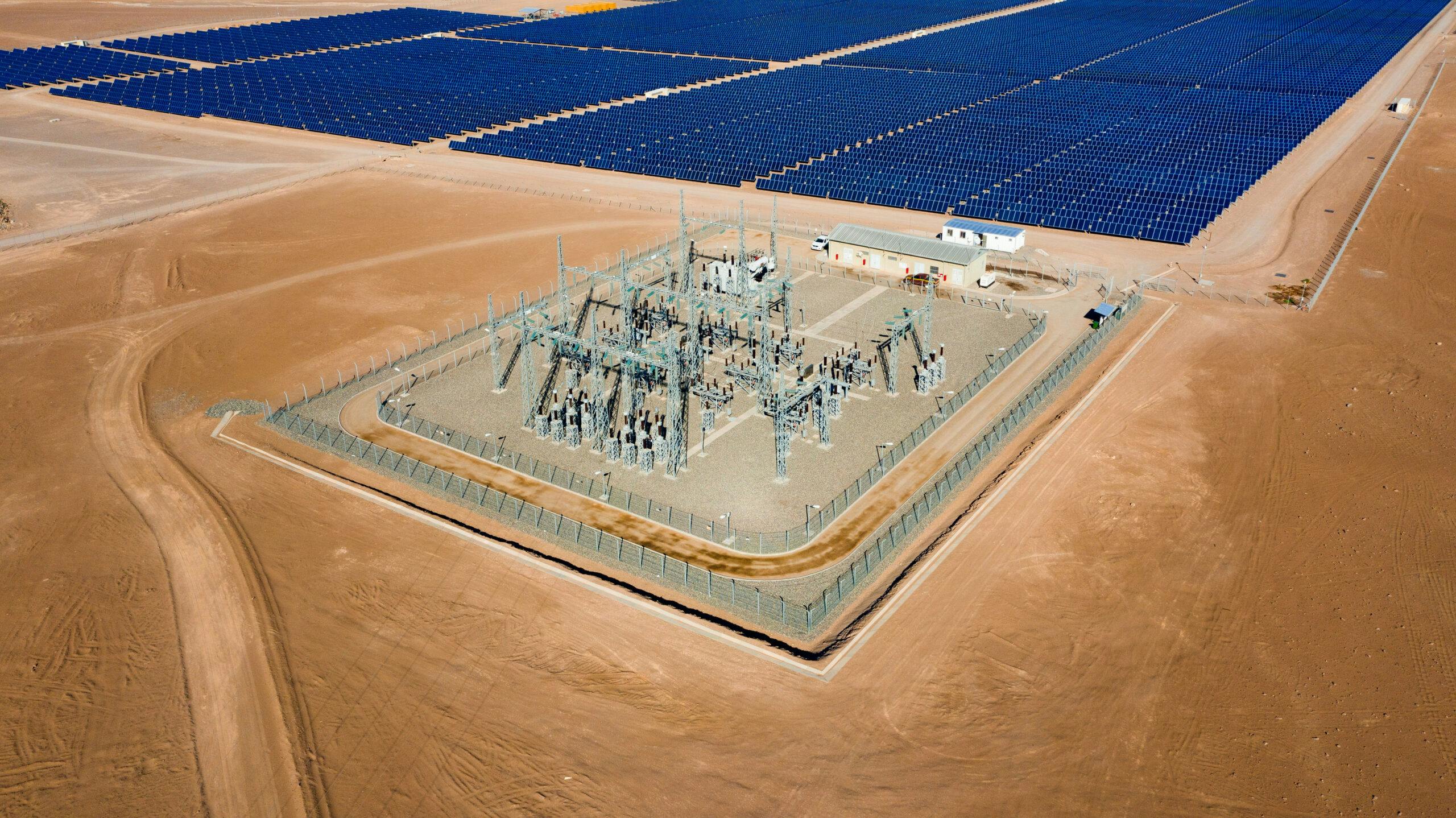WHY GREEN HYDROGEN IS PART OF THE ENERGY MATRIX OF THE FUTURE

For the first time in history, this year’s Olympic flame, which burned at Tokyo’s National Stadium Olympic Cauldron in the Games’ opening and closing ceremonies, was sustained by hydrogen.
The gas was created through the electrolysis of water using solar power, creating a truly green fuel that creates no emissions – unlike the propane and butane that are traditionally used at the Olympics.
As awareness grows around the use of so-called green hydrogen, Daniel Garcia, Commercial Senior Manager at Atlas Renewable Energy, explains the benefits of this fuel, and how it can be part of the energy matrix as the world looks ahead to a cleaner, more sustainable future.
What makes green hydrogen “green”?
Hydrogen fuel is made by separating the gas from fossil fuels, or splitting it out from water. Although today, hydrogen is already being used on an industrial scale, the electricity used to produce it is almost entirely supplied from natural gas and coal. As a result, today, hydrogen fuel production is currently responsible for 830 million tons of CO2 emissions per year – which is the same as the CO2 emissions of the United Kingdom and Indonesia combined.
This is clearly not sustainable, which is why we need green hydrogen. Produced through renewable energy, green hydrogen is extracted from water via electrolysis, making it a zero-carbon fuel. As the International Energy Agency stated, thanks to declining costs for renewable electricity, in particular from solar PV and wind, there is now growing interest in green hydrogen, and as a result, we believe that green hydrogen can make a significant contribution to the clean energy transition.
In what industries and applications can green hydrogen be used?
One of green hydrogen’s most suitable applications is for processes where hydrogen is already required. An example of this is in oil refineries, where hydrogen is used in the processing of most refined products – it’s normally obtained from the natural gas that is already extracted from the wells. Each ton of H2 produced with natural gas produces 9.3 tons of CO2, so replacing this with onsite green hydrogen production could have a dramatic impact on emissions.
Fertilizer production is another key area for the application of green hydrogen. Currently, fertilizer production facilities separate hydrogen from natural gas and combine it with nitrogen to make ammonia, but we’re starting to see the fertilizer industry begin to use electricity from photovoltaic plants to split water into oxygen and hydrogen instead, which is an encouraging sign.
One of the most interesting possibilities is in long-haul transport. Although the trend is towards the electrification of transport, the available technology currently covers short to medium range journeys of up to around 500km. Hydrogen fuel cells have been used to send rockets into space since the 1950s, and in the heavy-duty transport industry, hydrogen will likely be the solution for long-range mobility, particularly in sectors such as mining.
Is green hydrogen competitive with fossil fuels?
When we think about green hydrogen’s competitive advantage versus fossil fuels we have to take two main factors into consideration: the price of the fuel and the climate benefit.
Regions with high fossil fuel costs and abundant renewable resources are the most suitable for green hydrogen to replace fossil fuels at first. For example, in the US, there are numerous regions with very good wind and solar power resources, however, because of low shale gas prices it is difficult for green hydrogen to compete against fossil fuels on price alone. In Europe meanwhile, not only is there abundant wind energy but natural gas prices are also far higher, which means green hydrogen is a more competitive option.
The climate benefit is a much easier sell. Green hydrogen generates no emissions, and as governments around the world set net-zero targets for industries, and amid the growing trend towards the implementation of carbon taxes, we think that green hydrogen, alongside other renewable energy sources, will become an obvious choice.
What does the growth in green hydrogen mean for the renewable energy sector?
According to research by Goldman Sachs, green hydrogen could supply up to 25% of the world’s energy needs by 2050. We’ve already seen numerous countries, from Australia to Chile, Germany, the EU, Japan, New Zealand, Portugal, Spain and South Korea, publish national hydrogen strategies, and the fuel has a promising future in cutting emissions from the world’s most carbon-intensive industries.
Last year, the United Nations launched the Green Hydrogen Catapult Initiative in a bid to increase the production of green hydrogen 50-fold in the next six years. Replacing all of the world’s non-green hydrogen with green hydrogen would require 3,000 TWh per year from new renewables, boosting demand for solar and wind projects around the world.
What is the future outlook for the green hydrogen market?
Green hydrogen is far from a niche solution. We believe it’s worth paying attention to, because it solves important CO2 emissions appropriately and effectively. Its growth curve has only just begun: a large part of what makes green hydrogen competitive is the cost of renewables and its efficiency, and because we haven’t reached the full potential yet in these aspects, we believe that green hydrogen will become increasingly more competitive every year.
In the short term, we expect to see a proliferation of on-site green hydrogen solutions, in areas such as natural resources and petrochemicals. Some other solutions where it can be mixed with other fuels, such as natural gas, will also emerge in the medium term. The biggest challenge for green hydrogen is to achieve competitive transportation costs, and then is when it will reach its maximum potential in terms of greenhouse emissions reduction.
Share This Entry


